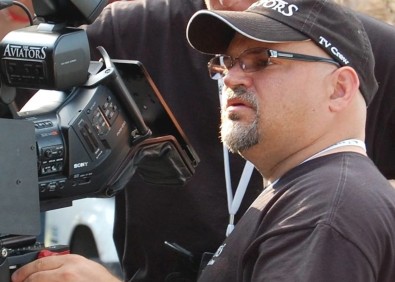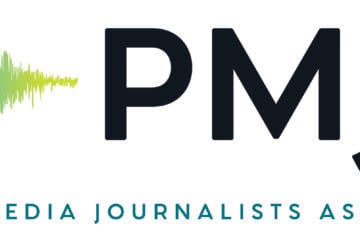Aviators grounds embedded marketing offer

During four seasons on the air, the public television documentary series The Aviators has built an impressive reach and following that transcends broadcasting. It airs in more than 100 countries, has more than 110,000 Facebook likes and at one point last year ranked as the second–most-downloaded video on iTunes, after The Daily Show with Jon Stewart.
While those metrics may bode well for public broadcasters weighing whether to pick up a niche-interest show appealing to aviation fans, they may want to consider them against the enticements that producers at Toronto-based FourPoints Television Productions have offered to potential sponsors.
 Until recently, a page on the Aviators website promoting program sponsorships used slick marketing lingo to pitch product placements, also known as embedded marketing. Sponsors could “expertly integrate their brands directly into the content of the show in a subtle, non-invasive and very effective manner,” the website said. Footers on several other pages said, “Brand integration and product placement opportunities are available.”
Until recently, a page on the Aviators website promoting program sponsorships used slick marketing lingo to pitch product placements, also known as embedded marketing. Sponsors could “expertly integrate their brands directly into the content of the show in a subtle, non-invasive and very effective manner,” the website said. Footers on several other pages said, “Brand integration and product placement opportunities are available.”
Such advertising tactics may be proliferating in commercial media, but they are forbidden by the FCC and public television distributors, including the National Educational Telecommunications Association, which has distributed The Aviators to local stations since 2010. The program’s carriage since 2010, according to TRAC Media and NETA, is 84.7 percent. It has aired in 158 markets in 42 states.
Series creator and Executive Producer Anthony Nalli told Current that the series adheres to FCC rules and NETA standards. He decided to remove the web page promoting product-placement sponsorships and other language because it didn’t conform to public TV’s noncommercial sensibilities. “Good entrepreneurs find ways to generate money in whatever situation they’re in,” he said. While noncom underwriting limitations “put producers in a tight box, we’ve managed to make them work.”
At least two other program-related websites have touted similar offers for pubTV shows. The America’s Test Kitchen site included an “On-Set Product Integration” page, and suggested that sponsors for the pubTV show take advantage of “customized marketing programs” such as “product integration and alignment.” And Classical Stretch, an exercise program, offers “discrete [sic] product placement” by talking up sponsor brands on its DVDs.

Series creator Anthony Nalli shoots a segment for The Aviators series, now entering its fifth season on public TV. (Photo: Avsafety on Wikipedia under Creative Commons)
However, in both of those instances the sponsored content did not make it on to pubTV airwaves, said Jamie Haines, spokesperson for American Public Television, which distributes both shows. APT producers can and do take advantage of commercial advertising techniques on other platforms, such as revenue-generating online content, host appearances, DVDs and book sales, Haines said. But APT carefully vets the public TV shows to ensure that they conform to its standards.
Such integrated marketing tactics are a long way from the practices of shows that pioneered how-to and niche-interest programming, such as Julia Child’s iconic cooking series. Her producers carefully avoided promoting any brands on the air. “Back then, a plain bottle was labeled ‘Olive oil,’ another was ‘Vinegar,’” said Geof Drummond, who worked with Child during the 1990s. “Everything was totally generic on purpose.”
Child “was adamantly against, and aghast at the idea of, product placement,” Drummond said. “She just never did it.”
Fast-forward to today’s sponsorship environment, where producers can cultivate underwriters who want to market their products through digital platforms where FCC rules to not apply.
The text identifying video segments taken from NETA-distributed Aviators programs and featured on the show’s website make some impressive, and questionable, claims. One clip hit “all the key marketing points suggested by the client,” which was aircraft manufacturer Mitsubishi. Another, on Southwest Airlines, featured “a community outreach message the client felt was important to convey.”
One caption told prospective sponsors: “The key during filming and post-production is to ensure emphasis is placed on select brands”; another, “Product beauty shots and feature descriptions easily play as relevant content.”
“[F]riendly brands are discreetly presented suggesting product endorsement, enhancing brand recognition and encouraging customer loyalty,” the promotional page said.
Officials at NETA and several pubTV programmers whose stations air the show said they were unaware that on-air product placements and brand integration appeared to be part of the producer’s revenue model.
After conferring with NETA, Nalli removed the web videos promoting embedded marketing and other marketing language from the show’s site. He acknowledged a misunderstanding over wording.
“I used the language of advertising, not of public television,” Nalli said. The Aviators follows distributor and FCC rules that dictate noncommercial production and sponsorship, “but that language isn’t one that companies outside public television routinely speak.”
‘Not good for any of us’
Executives at two PTV stations that broadcast The Aviators said they would drop the series after the producer’s embedded marketing program was brought to their attention. Others said they will reevaluate the program after hearing from the producers.
“This is not good for any of us,” said Dan Schiedel, executive director of Oklahoma’s OETA. “We don’t want to have to monitor the websites of national productions to watch for sponsorship enticements that include product placement.”
“We have a very small staff, and we expect and prefer that this monitoring take place at the distributor level,” Schiedel said.
But a sponsor’s appearance within a program doesn’t necessarily compromise the integrity of its editorial content, said Steve Bass, president of Oregon Public Broadcasting. “That’s what’s tricky,” he said. “At its worst, this leads to, ‘Well, this company paid us, so that’s what we’re going to feature.’ In that case, there’s no editorial judgment; it’s just who pays.”
“Then that starts to really get at the whole notion of how we operate and develop shows adhering to standards of noncommercialism and editorial integrity,” he said.
OPB airs The Aviators, and Bass is “waiting to see what the producers have to say” before deciding whether to keep the series in its lineup.
“There are two different issues at play” in the sponsorship marketing language Nalli used on The Aviators website, said Terry Dugas, programmer at NET in Nebraska, which airs the series. “First is soliciting funding for the series. Second is appearing to solicit funds for individual segments.”
If Nalli was making a case for series funding, “the language is simply marketing hype,” Dugas said. Some programmers may find this distasteful, but those pitches are within pubcasting guidelines and rules.
However, Dugas expressed concern that some of the language “appears to be solicitation for funds for an individual segment featuring the company — to me, this meets the definition of ‘pay for play.’ I will very carefully check funding credits for any new seasons of The Aviators.”
“Pay for play,” or financial compensation in exchange for favorable editorial content, is one of the commercial practices that programmers at national distributors and local stations guard against when considering programs for broadcast. Noncommercial standards call for pubcasters to avoid even the perception of it.
As PBS details in its “Commercialism test” guidelines: “The interest to be protected here is both the fact and the public perception that public television’s selection of programs and the content of those programs is responsive solely to the perceived needs of the public which it serves — not to the commercial interests of corporations or other entities who may fund public television programs.”
PBS and APT, the Boston-based distributor that syndicates programs as well as multicast services World and Create, have stringent rules concerning product placement. Although local stations have varying standards for sponsorship messages, they avoid broadcasting shows that rely on the practice.
PBS cautions producers to “scrupulously avoid ‘product placement’ arrangements, or the appearance thereof.” APT bans “the deliberate or gratuitous appearance in the program of an underwriter’s product or service in a way that draws attention to or features that product or service in any way.”
NETA’s standard is more succinct, simply asserting that product placement, “or the perception of product placement, must be avoided” [italics NETA’s].
NETA Program Director Gayle Loeber spot-checked episodes from two seasons of The Aviators to evaluate whether they adhered to NETA’s underwriting rules. She found no problems. “It’s very clean,” she said.
But she advised The Aviators’ producers to credit all the funders who back the program, disclosures that they had previously made only on their website. Nalli had been unaware that all sponsors must be credited on each episode, Loeber said, but he’s now meeting that requirement. A sponsorship page on the website, “Friends of The Aviators,” lists 42 sponsors and supporters.
“Anthony is trying to raise money from people who may not totally understand how public TV works,” Loeber said. “He was just trying to use language on the website that would make sense to them.”
In an interview, Nalli explained the marketing lingo. He considers the phrase “product beauty shots,” for example, to describe creative photography that the producers use to capture and retain viewer interest.
“Technology can be truly fascinating, but it can also be as dry as sand,” Nalli said, referring to the show’s specialized focus on the engineering and technology that supports modern aviation. “Take subject matter on the NASA channel. The elements can be presented in a slow and dull manner or in an upbeat way. Usually the latter is designed for younger audiences and shows that same content as being much more ‘cool.’ Add to that some artfully shot visuals and you have what we like to do on Aviators.”

A web page offering embedded marketing on America’s Test Kitchen, a cooking series distributed by APT, was removed this month.
Nalli clearly aims to engage a broader audience. He describes the series as “an all-encompassing show for even the passing aviation enthusiast.”
Segments focus on all aspects of aviation: jet manufacturing, hobby flying, airline pilots, airshows — even hot-air ballooning and blimps. “The storytelling is dynamic, the visuals are breathtaking,” Nalli said.
And FourPoints Television wasn’t alone in using such marketing phrases to attract to prospective sponsors.
Language promoting product placement was removed from the America’s Test Kitchen website this month because the media company is revamping all of its online materials, said Michael Burton, the new head of business development. ATK also publishes magazines, cookbooks and premium-access websites. The ATK brand is “assiduous” about avoiding even the perception of product placement, he said; he did not know how the wording ended up on the site.
Host Christopher Kimball, founding editor and publisher, said ATK cannot accept underwriting from any company whose product it reviews and would not allow brand integration.
The FCC and ethical guidelines
While public TV distributors have their own guidelines and practices to protect programming from the appearance of funder influence, local stations must adhere to FCC standards, which focus specifically on on-air identification of sponsors.
The FCC requires that all material for which a station receives consideration be identified as sponsored unless the products or services are “reasonably related” to the program’s content, said John Crigler, a telecom attorney with Garvey Schubert Barer in Washington, D.C. That means if a product or brand is skillfully integrated into program content, the FCC doesn’t require sponsor identification. For instance, Crigler said, if viewers glimpsed branded cans of soda sitting on a table.
But producers must disclose all sponsored material to stations, and the stations are responsible for deciding whether to identify sponsors at the time of broadcast, he said.
“The FCC doesn’t want to become so deeply involved in program content that it has to decide whether every reference to a product or service is ‘reasonably related’ to the program,” Crigler said. “It leaves that judgment to the producer and broadcaster.”
In his view, it’s appropriate that public television’s gatekeepers apply a stricter standard than the FCC. “Even if a product placement is ‘skillfully integrated’ into content, public television may not want to become a vehicle for selling impressions of product placements under the table, even if those impressions are unobtrusive,” he said.
To assist local pubcasters in navigating the complexities of sponsorship identification, the Editorial Integrity for Public Media Project developed guidelines that stations could consider adopting. But the current version focuses on news content and don’t address product placement. The issue is worth examining as the project continues, said Byron Knight, co-director.
Sponsorship disclosure is important for all programs, not just public affairs, Knight noted. “A show doesn’t get a free pass just because it’s not a news program.” He added that product-placement language on The Aviators’ website “was certainly over the line.”
‘They make it easy for us to tell their story’
As public broadcasters reexamine how to adapt to marketing practices that blur lines between editorial content and noncommercial sponsorship, brand integration in commercial media is becoming more commonplace. U.S. marketers “continue to up their investment in product placement,” according to a report by analyst PQ Media, “in an effort to connect with harder-to-reach, multitasking consumers who are using digital and wireless technology to consume content more often and to view advertising less frequently.”
Marketers in the U.S. spent an estimated $4.75 billion on product placement in 2012, the report said, inserting brands on all media platforms — television shows, movies, video games, music, and online and mobile content. The report projected an 11.2 percent annual growth rate through 2016.
But Nalli, who created The Aviators, now in its fifth season, sees potential revenue in brand integration done within public television guidelines.
He founded FourPoints Multimedia Corp. in 2001 in Toronto as an information technology company. Nalli became interested in public TV production after helping with the Canadian aerial documentary Wings Over Canada, and launched FourPoints Television in 2008.
The program’s online archive of programs is especially popular, with two videos each garnering more than 1 million views. One follows a day in the life of a professional pilot, and the other asks the question, “Can a private pilot land an airliner?” (The private pilot is Nalli, in a simulator, and the answer is yes — with a bit of coaching from air traffic control.) Three other videos on The Aviators YouTube page have each accrued more than 100,000 views.
Potential sponsors approach Nalli to appear in The Aviators, and FourPoints also markets the production to aviation companies. “Definitely companies know what we do,” Nalli said. “They say, ‘We have this terrific new aircraft, and we’d like you to tell the story.’ I can show their aircraft, or not. If I show it, people will say, ‘Wow, cool airplane.’ We may have helped them get a customer. So they help us to make that happen by paying for what we need — stuff like cameras, editors and distribution.”
“And they should pay,” Nalli said. “That helps us make it possible to tell their story. They cover travel, keep crews fed and housed, provide money to offset postproduction costs or keep lights on at the office. They make it easy for us to tell their story.”
He declined to discuss the show’s operating budget but said it is “self-sustaining.”
“No one is getting rich off The Aviators,” he said, “but we keep the lights on.”
Any brand identification that appears on public TV broadcasts is “100 percent incidental to the piece,” Nalli said. The upcoming season features a segment explaining odd noises during commercial flights that may trouble nervous fliers. “Southwest is a sponsor,” he said. “That airline had nothing to do with the segment, but we’re going to film on a Southwest airliner. And that brand will be on the seat backs. But we don’t say ‘Southwest Airlines’ in the piece.”
Though the website described opportunities for “product placement,” Nalli said he used the phrase by mistake. He stressed that there never has been, nor will be, financial exchange for use of a brand on the show.
Sample videos on the sponsorship page contained a mix of segments drawn from the public TV show, the commercial version distributed by Discovery and corporate videos produced by FourPoints, Nalli said. . “Commercial and corporate versions do not and will not air on public television.”
Despite assurances from Nalli and NETA that the embedded marketing options promoted on the Aviators website overplayed producers’ willingness to tailor shows to sponsors’ message points, several public broadcasters are either dropping the show or considering doing so.
Donna Jensen, program operations manager at KVIE in Sacramento, Calif., reviewed the sponsorship marketing webpages before FourPoints withdrew them and decided to pull the series. She said the station “would never knowingly air any program with product placement. But based on the sponsorship page that we have reviewed, it’s clear to us that it can no longer be on our air, and it will cease airing immediately.”
At OETA, “we make sure our local producers understand what sponsorship is and what sponsors get in exchange for their monetary support,” Schiedel said. “I have the same expectation for producers and distributors at the national level. Programs in our schedule that we find offering product placement will be dropped immediately . . . and will not return to our air until we see that they’re following the underwriting/sponsorship rules again.”
OETA will drop the series from its schedule in July, said programmer Holly Emig. “If they come out with a new season of Aviators, we’ll have to watch it closely, along with their website, for evidence of product placement,” she said. “The series has a significant fan base and we’d like to bring it back if there is a new season.”
And Brad Haug, programmer at Denver-based Colorado Public Television said he will be “investigating the concerns and reevaluating our decision to air the series.”
Meanwhile, NETA is in talks with Nalli to distribute his next program, The Bikers, about the world of motorcycles, scheduled to premiere in 2015.
“Going into Season 5, we’ve found that the formula for The Aviators worked well,” Nalli said. “We’re taking that recipe, which it’s taken us five years to develop, and mixing in other ingredients. We’re removing airplanes and replacing them with motorcycles.”
Nalli said he’d like to continue to use that “recipe” for more shows. “I have a bunch of ideas to replicate The Aviators for different interests and hobbies. They’ll make great programs for public TV.”
“Whether it’s aviators or bikers, this is definitely a category that fits like a glove on public TV, and I’m happy it has the success it does.”







Beyond the use of public media for advertising (Embedded marketing), why is a CANADIAN Company producing content for American Public TV?